The week at a glance
- Little Shearwater and Green Heron in Cornwall
- Buff-bellied Pipits in Shetland and Co Galway
- Dead Rufous-tailed Robin in Orkney
- Swainson's Thrush and Sykes's Warbler in Shetland
- House Crow and Yellow-rumped Warbler in Co Cork
- Possible Baikal Teal in Essex
- Possible Steppe Buzzard in Lothian
- Possible Chimney Swift in Co Kerry
- Possible Blyth's Pipit and possible Pallas's Grasshopper Warbler in Shetland
As the autumn hotted up, Shetland yet again stole virtually all the glory. With a string of first-class rarities to whet the appetite, the diverse supporting cast was also enough to rack up the self-found lists of many visiting birders.
First of the megas, though, was in the southwest, with another Little Shearwater in Cornwall. This bird was seen off Porthgwarra and around the Runnelstone Buoy for 15 minutes on 1st and is the third claimed in the county this autumn.
Oddly, a couple of the 'possibles' this week were accompanied by reasonable photographic evidence, which may well make their possible acceptance an easier task. The first was a probable first-winter drake Baikal Teal at Chigborough Lakes (Essex) on 2nd, though acceptance of this bird may take more than photos.

Baikal Teal, Chigborough Lakes EWT, Essex (Photo: John Buchanan)
Far more intriguing, though, was the record of a possible grey-brown morph Steppe Buzzard at Barns Ness (Lothian) on 3rd. Despite suspicions, it was initially dismissed as a Common Buzzard, and a photograph posted online went unnoticed. It was only three days later that news emerged of this would-be British first, though its identity has yet to be confirmed.

Steppe Buzzard, Barns Ness, Lothian (Photo: Geoff Morgan)
More straightforward was the first-winter Green Heron that turned up at Heligan (Cornwall) on 6th. Much to the chagrin of some, the Heligan Gardens wouldn't open early or close late to accommodate visiting birders, although as this is the first modern-day record for the county many paid the entrance fee. The only other Cornish record was actually the British first, shot in October 1889.
Green Heron, Heligan, Cornwall (Film: camelbirder).
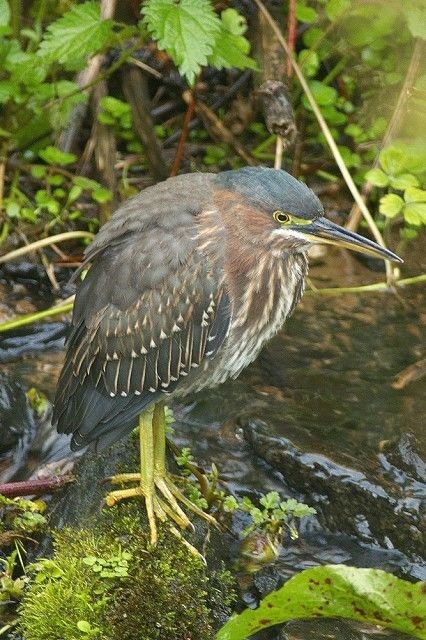
Green Heron, Heligan, Cornwall (Photo: Bob Mitchell)
Also from the west came a possible Chimney Swift, seen at Farranfore (Co Kerry) on 5th, though it couldn't be relocated. Also remaining unconfirmed was a report of a Blyth's Pipit on Whalsay (Shetland) on 2nd.
The run of Buff-bellied Pipits continued, with the Esha Ness (Shetland) bird remaining to 5th and the Fair Isle (Shetland) bird to 30th. There was then a new arrival at Truska (Co Galway) on 2nd–3rd. With this species definitely on the radar now and the identification criteria better and more widely known, the true pattern of records may start to emerge.
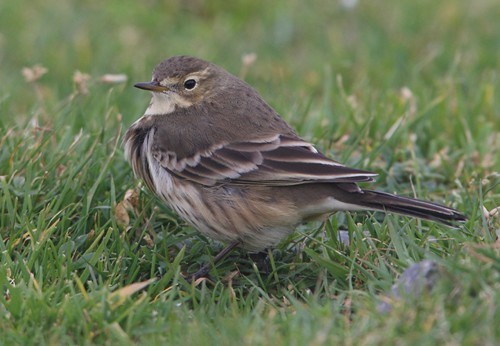
Buff-bellied Pipit, Esha Ness, Mainland, Shetland (Photo: James Wood)
The saddest find, and most amazing 'almost-ran', this week was a Rufous-tailed Robin found dead virtually on the steps of North Ronaldsay Bird Observatory (Orkney) on 2nd. This is only the third record for the Western Palaearctic, following a Fair Isle bird in October 2004 and a bird in Poland in January 2006.

Rufous-tailed Robin, North Ronaldsay, Orkney (Photo: Paul A Brown)
Back to the west, the autumn's second Swainson's Thrush was again in Shetland, at Levenwick on 2nd–3rd. Shetland also scored with possible Pallas's Grasshopper Warblers, typically elusive, on Fair Isle on 2nd and 6th and a more certain Sykes's Warbler at Channerwick (Shetland) on 2nd–6th. This confirms Shetland's draw for the species, with five of the 11 accepted records coming from the islands.

Swainson's Thrush, Levenwick, Mainland, Shetland (Photo:
John Hague)
Elsewhere the House Crow remained at Cobh (Co Cork) all week and also in Cork was yet another first-winter Yellow-rumped Warbler on Cape Clear on 5th–6th. Incredibly, of the 28 accepted records, no fewer than nine have been on the island!
In Lothian, the two Ross's Geese wandered more widely, seen with up to 5,000 Pink-footed Geese around Aberlady Bay, Gullane, Dirleton and North Berwick all week. One also remained at Caerlaverock (Dumfries & Galloway) to 2nd, with possibly the same bird at Rockcliffe Marsh (Cumbria) on 5th. There was then one in Montrose Basin (Angus & Dundee) on 4th and what must be an escape at Attenborough (Nottinghamshire) on 4th.

Ross's Goose, Attenborough NR, Nottinghamshire (Photo: Neil Loverock)
Small pockets of Ruddy Shelduck continue to be reported, with five at Coate Water Country Park (Wiltshire) on 1st the largest group. Others were at Boyton Marsh (Suffolk), Pilsey Island (West Sussex) and Kedleston Park (Derbyshire).
Chew Valley Lake (Somerset) continued to hold up to three drake Ferruginous Ducks all week, with others at Wintersett Reservoir (West Yorkshire) on 1st–6th and Lackford Lakes (Suffolk) on 3rd–4th. Chew also held a drake Ring-necked Duck on 30th, with others at Achill Island (Co Mayo) on 2nd–3rd and an adult drake at Kirkby on Bain Gravel Pits (Lincolnshire) on 5th–6th.

Ring-necked Duck, Kirkby on Bain GPs, Lincolnshire (Photo: Trevor Gunby)
The back end of the Nearctic ducks were in Ireland, and included an adult drake Black Duck at Achill Island (Co Mayo) on 3rd, a drake and female Blue-winged Teal at Tacumshin (Co Wexford) on 3rd–4th, a first-winter drake at Rahasane Turlough (Co Galway) on 3rd–6th and a new drake American Wigeon at Tarbet (Co Kerry) on 3rd.
Away from Ireland, the adult drake Lesser Scaup stayed at Draycote Water (Warwickshire) to 5th, the Cornish adult drake Surf Scoter remained off Penzance until 5th and the first-winter drake King Eider was off the Suffolk coast, seen at Minsmere and Dunwich Cliffs all week. Also of interest was a northern borealis Eider at Malin Head (Co Donegal) on 3rd.

Lesser Scaup, Draycote Water, Warwickshire (Photo: Max Silverman.)

Surf Scoter, Penzance, Cornwall (Photo: Yvonne Simmonds)
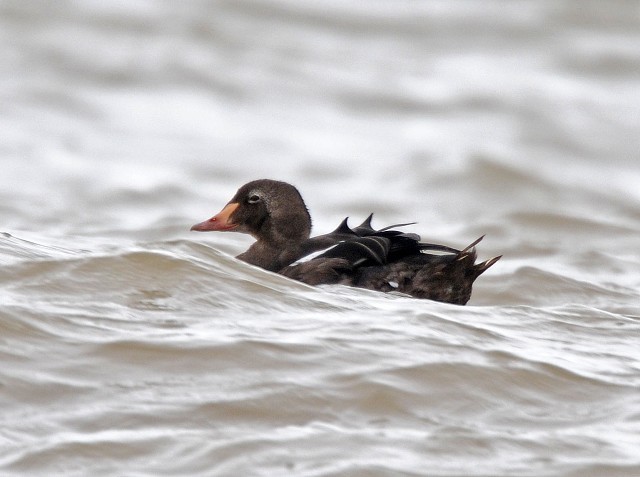
King Eider, Minsmere RSPB, Suffolk (Photo: Jon Evans)
With no records of big shearwaters, there were just big counts of medium shearwaters. The highlight was a count of over 1,000 Sooty Shearwater past Three Castles Head (Co Cork) on 1st, with the only other count close to this being 100 off Mizen Head (Co Cork) on 2nd. Good numbers of Balearic Shearwaters were limited to the Seawatch SW watchpoint at Porthgwarra (Cornwall), peaking at 96 on 30th and 94 on 2nd. Away from the southwest, other records came from Dungeness (Kent), Brownstown Head (Co Waterford), Galley Head (Co Cork) and Helvick Head (Co Waterford).
Numbers of Glossy Ibis were also much reduced, but birds seemed more widespread. Groups of three remained on the Otter estuary (Devon) to 3rd, at Budleigh Salterton (Devon) to 4th and also at Ring Marsh and Tacumshin (Co Wexford) on 3rd. Singletons were then seen at Minsmere (Suffolk) on 30th — though unconfirmed — Hayling Island (Hampshire) on 1st, St Asaph (Clwyd) on 1st, Ardboe (Co Tyrone) on 1st and Stanpit Marsh (Dorset) again to 6th.
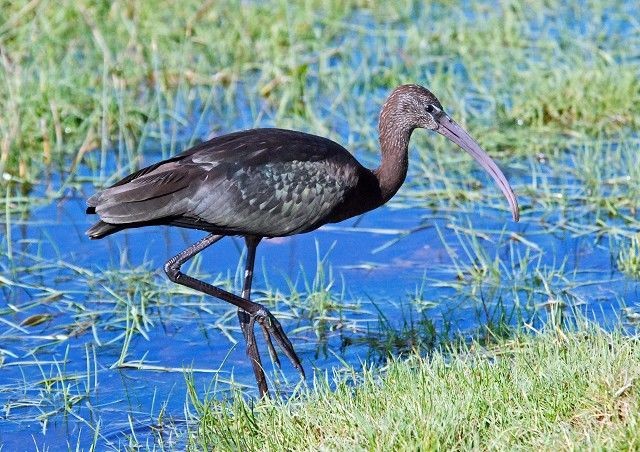
Glossy Ibis, Stanpit Marsh, Dorset (Photo: Tony Hovell)
The only White Stork of the week remained at Wareham (Dorset) to 4th. Great White Egrets also stayed put at Meare Heath (Somerset) to 6th, Idle Valley (Nottinghamshire) to 4th, Blashford Lakes (Hampshire) to 4th and Dungeness (Kent) to 4th. Other one-day birds were then at Godney Ponds (Somerset), Leighton Moss (Lancashire), Slapton Ley (Devon), Hesketh Out Marsh (Lancashire), Over Walney (Cumbria) and Sturminster Marshall (Dorset).

White Stork, Wareham, Dorset (Photo: Mike Coleman)

Great White Egret, Meare Heath, Somerset & Bristol (Photo: Jeff Hazell)
New Cattle Egrets popped up at March Farmers (Cambridgeshire) on 6th with two on Tetney Marshes (Lincolnshire) on 3rd. There was also an interesting record of a adult Night Heron reported from a moving car at Eye Green (Cambridgeshire) on 2nd, though not since.
Wintry raptors began to appear, with a possible White-tailed Eagle over Bulphan (Essex) on 5th. Rough-legged Buzzards were over Minsmere (Suffolk) on 30th, reported at Stockton on the Forest (North Yorkshire) on 2nd and over Seaforth (Lancashire) on 4th, with an adult over Amberwood Inclosure (Hampshire) on 4th. More summery was a female Red-footed Falcon over Rainham Marshes (London) on 30th, and another was reported over Portland (Dorset) on 4th.
The only Spotted Crakes were at Greylake RSPB (Somerset) on 1st–4th and on Great Pool, Tresco (Scilly) on 3rd.

Spotted Crake, Greylake RSPB, Somerset & Bristol (Photo: Nick Stacey)
Several possible American Golden Plovers caused confusion, but more definite birds were at Great Heck (North Yorkshire) on 3rd–6th, on the Cashen estuary (Co Kerry) again to 4th, on St Mary's (Scilly) on 5th–6th and at Truska (Co Galway) on 6th.
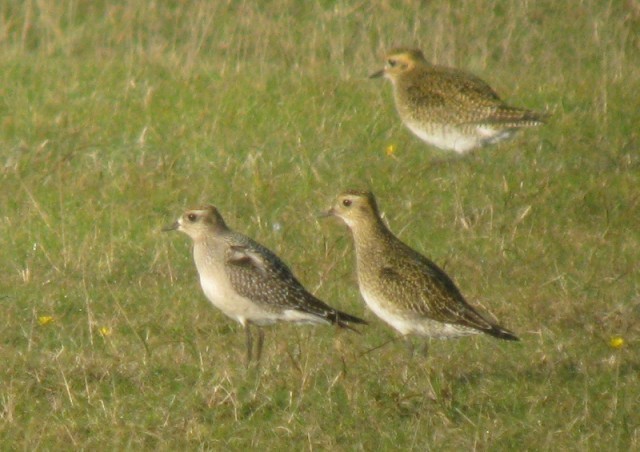
American Golden Plover, Truska, Galway (Photo: Dermot Breen)
Single Buff-breasted Sandpipers remained at 13 sites across the country, with two birds at Scotney Gravel Pits (East Sussex) to 5th, Davidstow Airfield (Cornwall) to 5th and Tiree, Argyll. Three were then at Esha Ness (Shetland), five at Tacumshin (Co Wexford) and six still at Carrahane Strand (Co Kerry).

Buff-breasted Sandpiper, Arlington Reservoir, East Sussex (Photo: Howard Kearley)
Pectoral Sandpipers were just as numerous, with birds from Orkney to Jersey and Essex to Co Cork. There were two birds at Abberton Reservoir (Essex) on 30th–5th, Loch of Strathbeg (Aberdeenshire) again on 3rd and in Shannon Harbour (Co Offaly) on 3rd, with three at Three Castles Head (Co Cork) on 4th.
Abberton also held the only Semipalmated Sandpiper of the month, present with a whole variety of quality birds on 3rd–6th. White-rumped Sandpipers remained at Black Rock Strand (Co Kerry) to 30th and Oare Marshes (Kent) to 30th with a new juvenile at Tacumshin (Co Wexford) on 2nd. The only Lesser Yellowlegs was at Rubha Ardvule, South Uist (Outer Hebrides) on 3rd–6th.
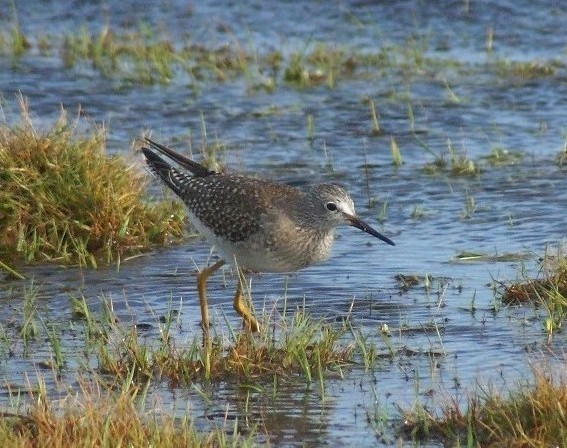
Lesser Yellowlegs, Rubha Ardvule, S. Uist, Outer Hebrides (Photo: Steve Duffield)
The two long-staying Spotted Sandpipers were at Porth Hellick, St Mary's (Scilly) all week and Turf (Devon) to 5th, and there was a Long-billed Dowitcher at Colliford Lake (Cornwall) on 30th. Another Great Snipe kept observers busy at Covehithe (Suffolk) on 1st, seen just four times in flight.

Spotted Sandpiper, Exe Estuary, Devon (Photo: Peter Moore)
Norfolk hosted Red-necked Phalaropes at Kelling and Cley during the week, with another at Blagdon Lake (Somerset) on 4th–5th. Inland Grey Phalaropes were seen in Conwy, Norfolk, Lincolnshire, Gwent, Dorset, Co Kerry, Co Mayo and Devon, with the peak counts at sea being 12 off Three Castles Head (Co Cork) on 3rd, 22 past Ballydavid Head (Co Kerry) on 1st and a very impressive 70 past Dursey Island (Co Cork) on 5th.

Grey Phalarope, Titchwell RSPB, Norfolk (Photo: Peter Walkden)
Wilson's Phalaropes remained at Dowdeswell (Gloucestershire) to 30th and Tacumshin (Co Wexford) to 5th with a new bird at Welney (Norfolk) on 2nd–6th. There was also a late report of two at Barrystown (Co Wexford) on 28th.
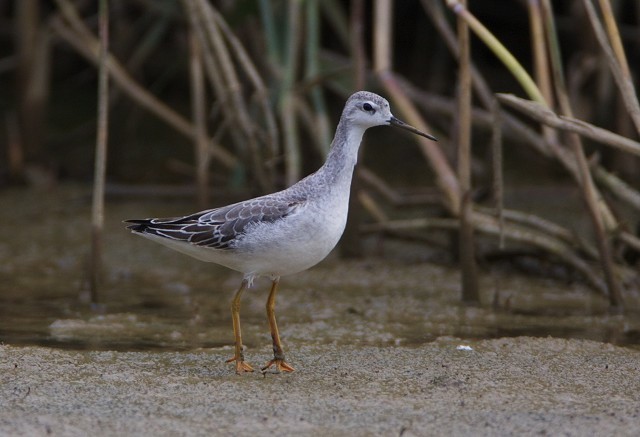
Wilson's Phalarope, Dowdeswell NR, Gloucestershire (Photo: Mike Smith)
All the week's Glaucous Gulls were seen on the 2nd, at Wembury (Devon), Bressay (Shetland) and Lamba Ness, Unst (Shetland). The only Iceland Gulls were an adult at Silverstrand (Co Galway) on 30th and a first-winter at Bamburgh (Northumberland) on 4th.
The American Herring Gull was again at Blennerville (Co Kerry), reported on 1st–2nd, and Ring-billed Gulls were at Nimmo's Pier and Mutton Island (Co Galway) on 30th–2nd, Five Mile Point (Co Wicklow) on 30th, Portrush (Co Antrim) again on 2nd, Westcliff-on-Sea (Essex) again on 3rd–4th and a second-winter at Dinham Flats (Cornwall) on 4th.
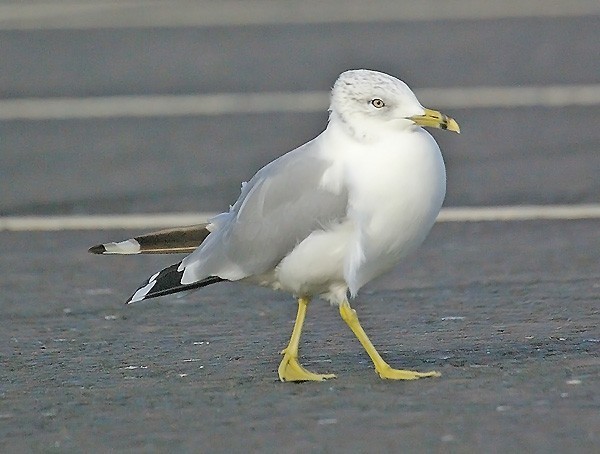
Ring-billed Gull, Portrush, Antrim (Photo: Derek Charles)
Single Sabine's Gull were seen off various, mostly westerly, coasts, with six off a boat south of Start Point (Devon) on 2nd.
The White-winged Black Tern remained unappreciated by the masses (but adored by the minority) in Hyde Park (London) to 4th and a new juvenile was at Thornton Reservoir (Leicestershire) on 3rd.
White-winged Black Tern, Hyde Park, London (Film: BirdGuides).
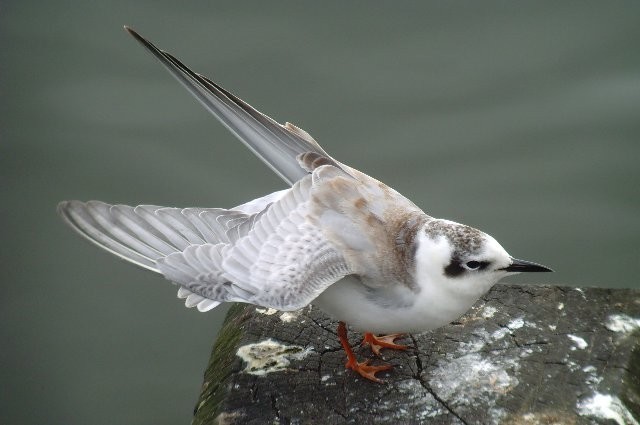
White-winged Black Tern, Hyde Park, Greater London (Photo: Richard Bonser)
This time round it was the male Snowy Owl's turn to be reported, at Mangurstadh, Lewis (Outer Hebrides) again on 1st.
There were still good numbers of Wrynecks along the east and south coasts, with at least 20 birds reported. Top counties were Norfolk, Devon, Cornwall and Scilly, all with three bird each.

Wryneck, Hunstanton, Norfolk (Photo: Peter Walkden)
The only Hoopoe of the month was at Stromness (Orkney) on 30th. There were plenty of Short-toed Larks, though, with birds at Girdle Ness (Aberdeenshire), Tiree (Argyll), Exnaboe (Shetland), Wester Quarff (Shetland), Covehithe (Suffolk), Hermaness, Unst (Shetland) and Fort Hommet (Guernsey).

Short-toed Lark, Fort Hommet, Guernsey (Photo: M Lawlor)
Richard's Pipits continued to shreep overhead, with birds at Thornbury (Gloucestershire) on 30th, Salthouse (Norfolk) on 1st, the Farne Islands (Northumberland) on 2nd and Harrington Airfield (Northamptonshire) on 4th. Scarcer pipits included Olive-backeds on Fair Isle (Shetland) on 30th and Out Skerries (Shetland) on 1st, with Red-throateds reported at Dunquin (Co Kerry) on 30th, Brough, Whalsay (Shetland) on 2nd, Portland (Dorset) on 4th and Fair Isle (Shetland) on 30th.
A late Red-rumped Swallow went over Donna Nook (Lincolnshire) on 5th and Shetland Citrine Wagtails were on Out Skerries on 2nd–5th and at Sandwick on 4th.
By recent standards, only two Red-flanked Bluetails seems a bit slow, with birds ringed on Whalsay (Shetland) on 30th and in a private garden at Pakefield (Suffolk) on 30th. Bluethroats were more numerous, with a bird ringed at Romsey (Hampshire) on 30th — retrapped on 2nd — and as many as eight birds on Shetland. Away from there, birds were at Kingsdown (Kent) on 4th and Tiree (Argyll) on 5th.
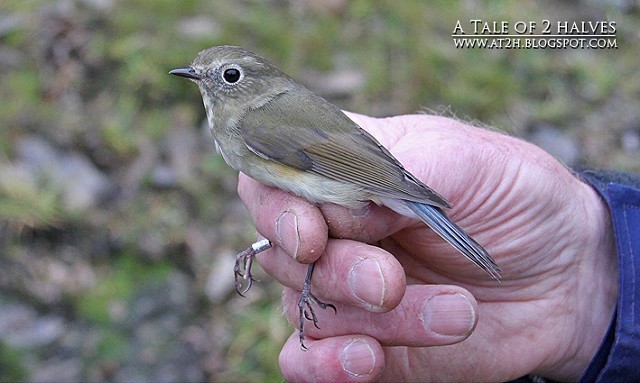
Red-flanked Bluetail, Skaw, Whalsay, Shetland (Photo: Jason Atkinson)
The first Black-throated Thrush of the autumn was a first-winter male ringed at Melvich (Highland) on 2nd — also a first for the region.
With no new easterlies, many southern Barred Warblers moved on, though Shetland was still home to around 23 birds this week. The other top counties were Northumberland with seven birds, Norfolk with five and Co Cork with four.

Barred Warbler, Donna Nook, Lincolnshire (Photo: Dean Eades)
Back in Shetland, a probable River Warbler at Quendale on 30th was followed by another at Fladdabister on 30th, with Lanceolated Warblers on Fair Isle on 2nd–3rd and at Skaw, Unst on 6th. Add to that a Paddyfield Warbler on Foula on 30th, a Booted Warbler at Quendale on 1st–2nd and an Arctic Warbler at Brae on 30th and it's been an incredible week on the islands. Blyth's Reed Warblers were further south, though, with birds at Foveran Links (Aberdeenshire) on 30th, one ringed on North Ronaldsay (Orkney) on 30th (staying to 1st) and another at Marsden Bay (Durham) on 1st. There was a better showing of Marsh Warblers, with birds at Barns Ness (Lothian) on 30th–2nd, one ringed at Kilnsea (East Yorkshire) on 3rd and one at Levenwick (Shetland) on 3rd.
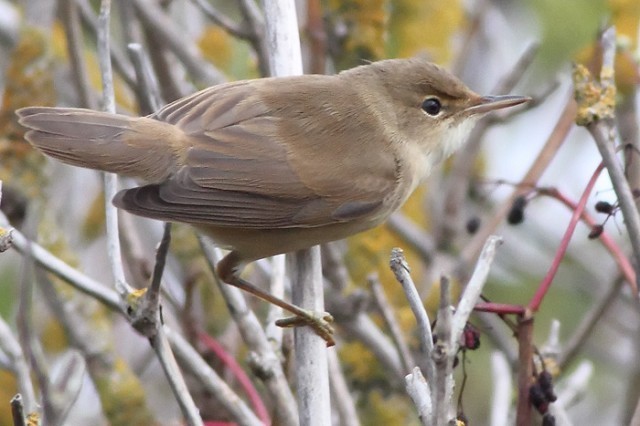
Marsh Warbler, Barns Ness, Lothian (Photo: Jack Brodie)
Of the Hippos, Icterine Warblers were at Auchmithie (Angus & Dundee) on 30th and at Stove, Sanday (Orkney) on 30th, with a Melodious Warbler still on Bardsey (Gwynedd) to 4th. The identity of a mystery warbler at Holkham Pines (Norfolk) on 2nd seemed to swing from Icterine, to Willow, to Melodious to Chiffchaff, so who knows what to report?!
Yellow-browed Warblers continued to arrive en masse, with as many as 165 birds across the country. Most were in Shetland — possibly 64 birds — with 15 in East Yorkshire, 11 in Orkney and 11 in Northumberland. Peak daily counts were eight at Kergord (Shetland), and seven on Fair Isle (Shetland), North Ronaldsay (Orkney) and at Flamborough Head (East Yorkshire).
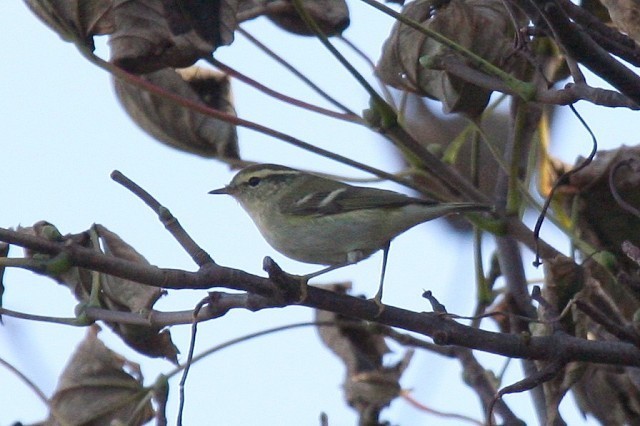
Yellow-browed Warbler, Barns Ness, Lothian (Photo: Ian Andrews)
Last of the warblers were, surprise surprise, on Shetland, with a possible Hume's Leaf Warbler at Fladdabister on 6th and a Radde's Warbler at Sumburgh on 2nd–4th.
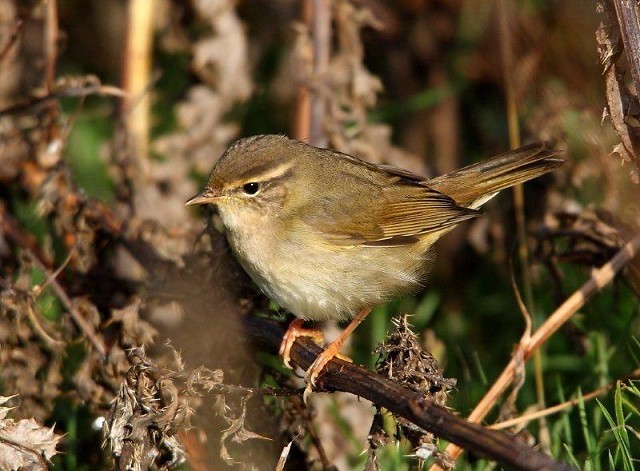
Radde's Warbler, Sumburgh, Mainland, Shetland (Photo: James Wood)
Red-breasted Flycatchers were rather more widespread, with 11 on Shetland and others in Aberdeenshire, East Yorkshire, Orkney, Angus & Dundee and on Scilly.

Red-breasted Flycatcher, Spurn, East Yorkshire (Photo: Martin Standley)
Several Great Grey Shrikes from last week's influx remained, with most seemingly in East Yorkshire. The county held nine birds — including three at Spurn — with three in Aberdeenshire, three in Lincolnshire, two in Shetland, two on Holy Island (Northumberland) and others in Durham and Suffolk. In the south was a bird at Ramsgate (Kent) on 4th–5th, in the west was one at Campfield Marsh (Cumbria) on 2nd and inland one was reported from Ramsley Reservoir (Derbyshire) on 3rd.

Great Grey Shrike, Spurn, East Yorkshire (Photo: J S Melia)
The Woodchat Shrike remained at Hartlepool Headland (Cleveland) to 6th with a new juvenile on St Mary's (Scilly) on 2nd. There are far fewer Red-backed Shrikes now, with the only birds now at Speeton (North Yorkshire) on 30th, Kincraig Point (Fife) on 30th–2nd, South Gare (Cleveland) to 4th, Auchmithie (Angus & Dundee) on 3rd, Cromer (Norfolk) on 5th–6th and Cunningsburgh (Shetland) on 5th.
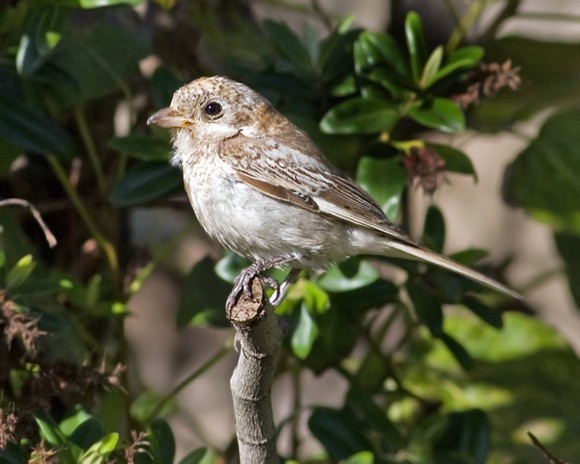
Woodchat Shrike, Hartlepool Headland, Cleveland (Photo: Robert Hammond)

Red-backed Shrike, South Gare, Cleveland (Photo: Ian Forrest)
A few more Rose-coloured Starlings appeared, with one at Garinish Point (Co Cork) remaining to 3rd, while another roosted in Penzance (Cornwall) on 2nd–5th. Others were on North Ronaldsay on 2nd–5th, Studland Heath (Dorset) on 3rd–4th and Porthgwarra (Cornwall) on 2nd–5th.
Various Hornemann's Arctic Redpolls continued to please photographers and birders alike, though were fewer in number. Aside from Shetland birds at Northdale and Hermaness on Unst and on Fair Isle, one was on the Farne Islands (Northumberland) to 2nd with one on Three Castles Head (Co Cork) on 2nd.

Arctic Redpoll, Norwick, Unst, Shetland (Photo: Mike Pennington)
There were just three remaining Common Rosefinches on Shetland, with others at Milton Ness (Aberdeenshire), Deerness (Orkney), Lundy (Devon), Cape Clear (Co Cork) and Durlston Country Park (Dorset).

Common Rosefinch, Norwick, Unst, Shetland (Photo: Mike Pennington)
More numerous were Little Buntings, with three on Unst, singles on Out Skerries, Foula and Fair Isle and two on Orkney, at Finstown on 30th and South Ronaldsay on 1st. The only southern bird was ringed at Buckton (East Yorkshire) on 30th.
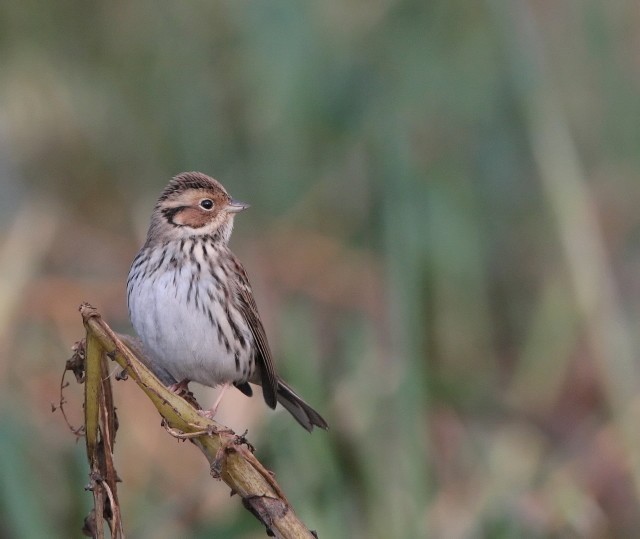
Little Bunting, Norwick, Unst, Shetland (Photo: Robbie Brookes)
Many of the autumn's Ortolan Buntings seem to have moved on, but birds were still reported from South Ronaldsay (Orkney) on 30th, Foula (Shetland) on 1st and two at Pendeen (Cornwall) on 3rd. Peak counts of Lapland Buntings remained high, though, with the most notable being 160+ on Fair Isle (Shetland) on 30th, 150 at Howmore, South Uist (Outer Hebrides) on 3rd and 146 on North Ronaldsay (Orkney) on 1st, with 242 Snow Buntings. Further south the best was "up to 60" at Cemlyn Bay (Anglesey). A count of 26 over Hunstanton (Norfolk) on 5th was dwarfed by the count of 15,132 Chaffinches on the same day — a British 'vis-mig' record. Even this doesn't quite compare to the counts on the Dutch coast, with a six-hour count at Den Haag producing 165,260 Chaffinches, 20,190 Song Thrushes, 127 Grey Wagtails, 81 Sparrowhawks and 113 Spoonbills.
Lapland Bunting, Treeve Common, Cornwall (Film: chippler01).
Bringing up the rear very nicely were the Rustic Buntings that remained at Isbister (Shetland) to 30th and Flamborough Head (East Yorkshire) to 4th, with a new bird on St Agnes, (Scilly) on 4th–5th, and the year's first Black-headed Bunting, on Out Skerries (Shetland) on 2nd–5th.

Rustic Bunting, Flamborough Head, East Yorkshire (Photo: Andrew Walker)
Almost a mega in its own right these days, the first Red-eyed Vireo also arrived this week, in Firkeel Glen (Co Cork) on 6th.
Photo of the Week: 29th September—6th October
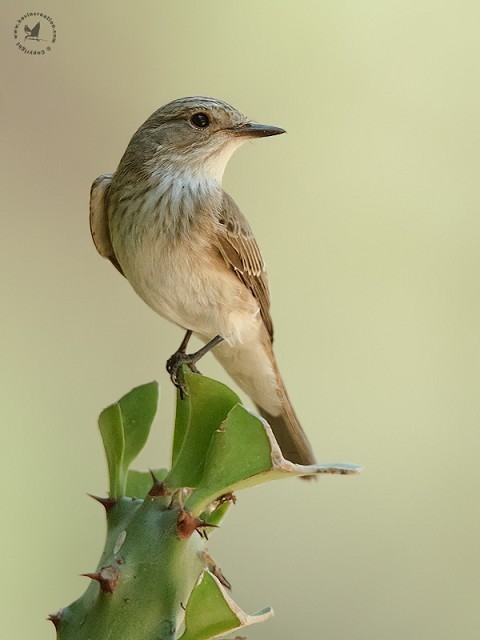
Spotted Flycatcher, India (Photo:
Mital Patel)
Since he started posting to BirdGuides at the beginning of this year, bird photographer Mital Patel has delighted us with a series of beautiful images depicting the birdlife of Gujarat in India. Many of Mital's photos feature colourful and exotic local birds but, even when photographing 'duller' species familiar to UK birders, he manages to capture them in soft, subtle lighting and to present them in well thought out compositions. A perfect example is his photo of a Spotted Flycatcher uploaded this week. With the flycatcher landing on a natural perch that had light reflected up from below 'filling in' the shadows, Mital used a long focal length and wide aperture to isolate the bird from the background. The most critical factor was then to freeze the bird at the right moment, which he achieved superbly: the elegant pose, with the body facing one way and the head facing the other, is a classic artistic arrangement. With a shot like this one, though, 'framing' can really make or break the composition. It's essential to give the bird space to look into the frame, but it's also important to strike a balance between the proportions of the perch and the bird, and between the positive and negative space in the image (in this case, the area occupied by the bird-plus-perch and that occupied by the background). Mital makes this look easy and provides a great exemplar that anyone just starting out can emulate.
Other notable photos

Common Kingfisher, undisclosed site, Worcestershire (Photo:
Mark Hancox)

Bearded Tit, Kelling, Norfolk (Photo:
Gary Thoburn)

Northern Wheatear, Titchwell RSPB, Norfolk (Photo:
Tom Hines)

White-winged Black Tern, Hyde Park, Greater London (Photo:
Kevin Du Rose)

White-tailed Eagle, Germany (Photo:
Siegbert Werner)

Short-eared Owl, Grove Ferry NNR, Kent (Photo:
Mark Chidwick)

Water Rail, Upton Warren NR, Worcestershire (Photo:
Birdy)

Mallard, undisclosed site, Lancashire (Photo:
Tom Charles)

Red-necked Grebe, Westbere GPs, Kent (Photo:
Mike Gould)

Red-breasted Flycatcher, Spurn, East Yorkshire (Photo:
Paul Foster)

Lapland Bunting, Malin Head, Donegal (Photo:
Ronan McLaughlin)

Barred Warbler, Donna Nook, Lincolnshire (Photo:
Dean Eades)

Ring Ouzel, undisclosed site, Powys (Photo:
Steve Wilce)

Goldcrest, Hauxley NR, Northumberland (Photo:
Tim Mason)

Nuthatch, Cannock Chase, Staffordshire (Photo:
Derek Lees)

Lapwing, Oare Marshes NR, Kent (Photo:
Ian Curran)

Grey Phalarope, Covenham Reservoir, Lincolnshire (Photo:
Graham Catley)

White Stork, Wareham, Dorset (Photo: anon)

Short-eared Owl, undisclosed site, Argyll (Photo:
Jimmy MacDonald.)

